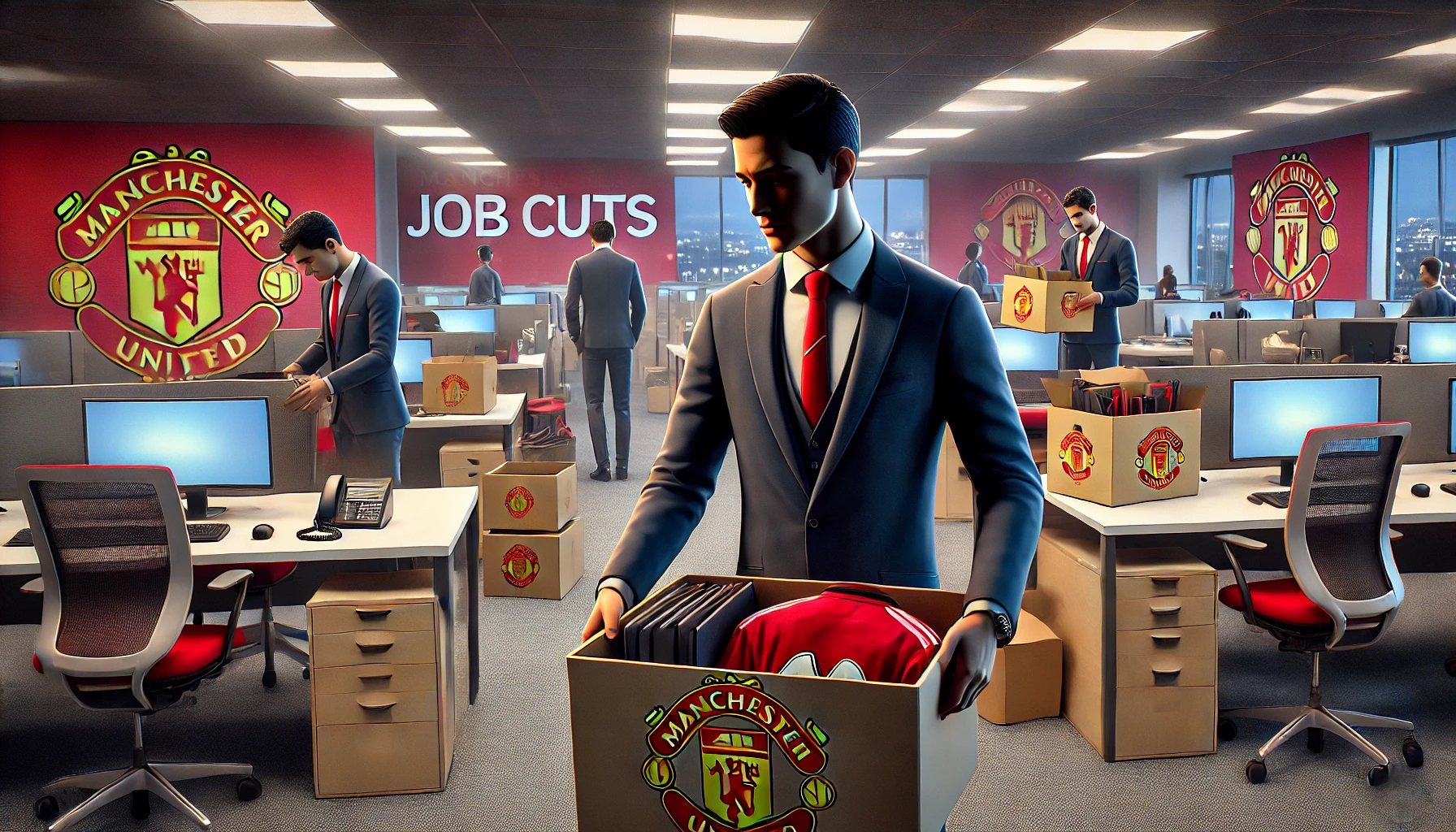Manchester United has announced significant job cuts as part of a broader financial restructuring plan aimed at stabilizing the club’s long-term financial health. The move, which will see up to 200 positions eliminated, comes under the leadership of co-owner Sir Jim Ratcliffe and his company, INEOS, who took control of the club’s sporting operations in early 2024.
Financial Challenges Leading to Job Cuts
The club has faced mounting financial difficulties, with reported losses exceeding £300 million over the past three years. These financial strains have raised concerns regarding compliance with the Premier League’s financial regulations. Manchester United’s Chief Executive, Omar Berrada, has initiated a “transformation plan” to address these challenges, ensuring sustainability and competitiveness.
The latest round of layoffs follows a previous workforce reduction in 2023, where approximately 250 employees were made redundant. With this new phase, the total number of job losses will reach around 450, signaling a major shift in the club’s operational structure. These job cuts aim to reduce overall expenditure and bring the club back to profitability after enduring five consecutive years of financial losses.
Impact on Employees and Club Operations
Alongside job cuts, Manchester United has implemented additional cost-saving measures. These include the discontinuation of free staff meals at Old Trafford, a reduction in employee bonuses, and the relocation of several staff members from Old Trafford to the Carrington training ground. These changes are expected to save the club over £1 million annually but have led to mixed reactions from employees and fans alike.
Previously, Manchester United staff enjoyed complimentary lunches, a benefit now being phased out. Reports indicate that employees have been offered alternative lower-cost meal options, including soup and bread. The removal of these long-standing perks has been met with disappointment from many within the club.
Leadership Reshuffle and Financial Strategy
The restructuring efforts have also led to notable leadership changes. One of the most significant developments includes the termination of Sir Alex Ferguson’s role as a global ambassador. Ferguson, one of Manchester United’s most iconic figures, had played a crucial role in promoting the club worldwide.
Despite these cost-cutting measures, the club continues to invest heavily in player acquisitions and wages. Star players like Bruno Fernandes and Casemiro continue to command high salaries, sparking debates over Manchester United’s financial priorities. While cutting operational costs, the club remains determined to maintain its competitive standing in domestic and international football.
Future Plans and “Project 150”
As part of its long-term vision, Manchester United has unveiled “Project 150,” an ambitious plan designed to position the club as a leading force in European football once again. The project aims to secure a Premier League title by 2028, focusing on strategic investments, youth development, and managerial stability.
While these financial and structural adjustments may pose challenges in the short term, the club’s management believes they are necessary steps toward ensuring sustainable success in the future.
Conclusion
The latest round of job cuts at Manchester United highlights the club’s efforts to navigate financial difficulties and restructure under the guidance of Sir Jim Ratcliffe and INEOS. While these cost-cutting initiatives aim to secure the club’s financial health, they also raise concerns about staff welfare and operational efficiency. Moving forward, Manchester United must strike a balance between financial prudence and maintaining the traditions that have made it one of the most renowned football clubs in the world.
Sources:









Leave a Reply